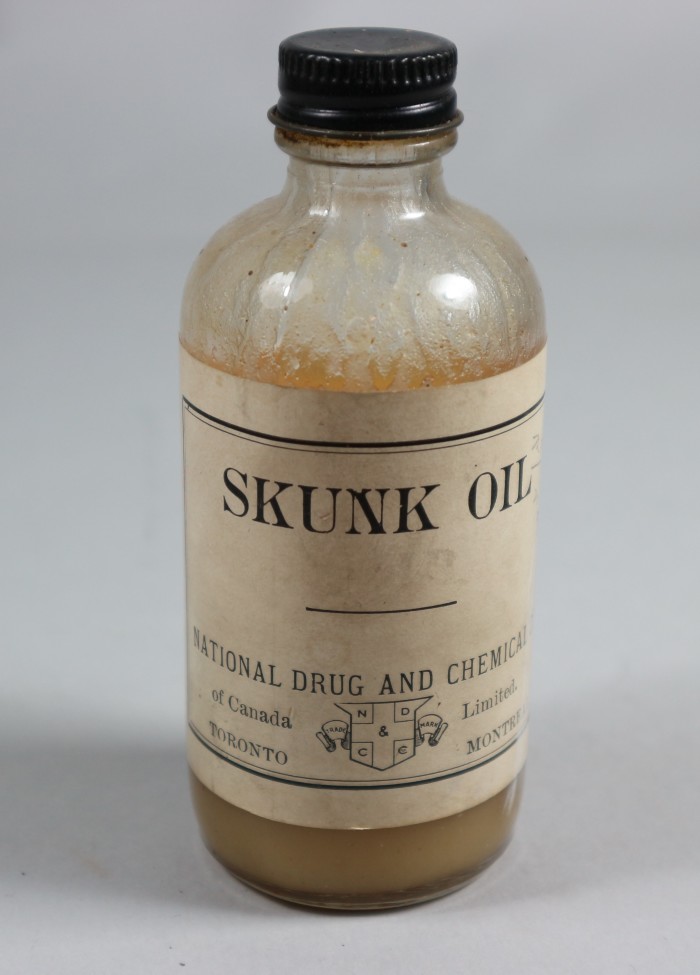Bottle, Medicine
Artifact
Identifier:
1969.012Description
Round, clear glass bottle with screw cap and paper label, containing skunk oil. Bottle still contains some of original contents. Produced by the National Drug and Chemical Company of Canada.Additional Information
This bottle was from the Parke & Parke Store, and was found shortly before the demolition of the block of buildings bound by James, King, Macnab and Market Streets, around Feb. - Mar., 1969.Parke & Parke Limited was a wholesale and retail druggist/chemist company in Hamilton. In 1876, Walder Parke and Charles McGregor created the McGregor and Parke Drug Store (located at 1 Market Square). In 1904, the store was moved to the building at the corner of Macnab & Market St. They officially incorporated as Parke and Parke Limited in 1917, and grew to be one of the largest pharmaceutical manufacturers and supplies in Canada.
;The National Drug and Chemical Company was incorporated in 1905, with headquarters in Montreal. Throughout 1906, the corporation initiated the integration of 19 wholesale drug companies and 13 retail stores. National Drugs merged with other various regional drug companies across Canada throughout the 20th century, and became Canada's leading drug wholesaler and manufacturer, and one of the largest pharmaceutical companies in the British empire. In 1991, the McKesson Corporation of San Francisco acquired a 100 percent interest in the company (then known as Medis Health and Pharmaceutical Services). In 2002, the McKesson Canada name was adopted and a new brand was introduced, which it is still known by today.;Skunk oil is obtained from the lateral glands that run along a skunk's back. The oil has minimal odor. It has long been used by Indigenous people throughout North America as a healing balm or liniment, and was regularly sold to European fur traders, explorers, and colonial settlers who found it to be a useful addition to their medical kits. Skunk oil was used as a treatment for coughs and respiratory ailments, with the belief that when applied to the chest, it would penetrate the skin into the lungs and help with breathing. Those suffering from whooping cough or croup may have rubbed the oil on their chests or drank it in order to induce vomiting, with the belief that it would clear their lungs and calm their coughs.
Date:
1900-1910Creator:
National Drug & Chemical Co. Ltd. Toronto-Montreal
(manufacturer)
(retailer) (located)
(retailer) (located)
